I ordered and received my second aux battery, a Panasonic UP-RW1220P1. This guy is designed for UPS applications, which is basically how I'm going to use it. It's a little larger than the previous one I was messing around with, but the flatter shape of it actually gives me more options for mounting. It also has 1/4" connectors instead of the flimsier 3/16" ones on the other battery, which is a bonus.
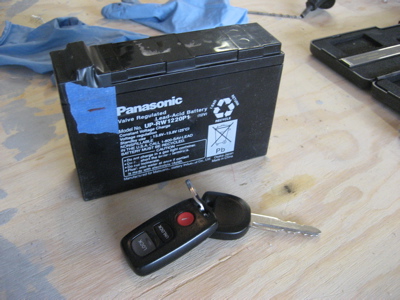
This is the battery tray I made for it. It's all made from 1/16" aluminum angle. I actually started out intending to build it out of 1/8" angle, but it became apparent that it was going to be horrendously heavy and overbuilt that way. Since I'm building an airplane, not a Soviet tractor, I scrapped what I'd done and built this one instead. I was peeved at throwing away half a day's work, but the final version turned out pretty nice.
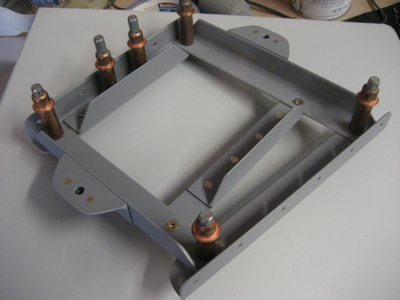
It's mounted beneath the floor on the passenger side of the baggage compartment, in the wedge-shaped bay just outboard of the strobe power supplies. I attached the side angles to the floor ribs with blind rivets, then shot and bucked the round-head rivets that attach the left wall of the tray since there was no way to get a squeezer down in there. First rivets I've shot in approximately forever.
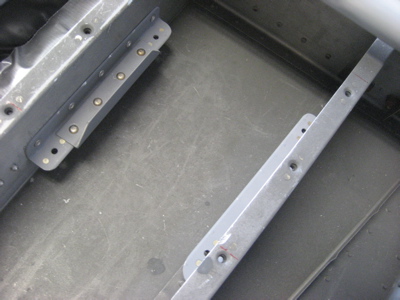
Here's the rest of the pieces installed with screws. Like a ship in a bottle, I had to make it able to be disassembled so I could put it together inside the fuselage and still have good riveting access.
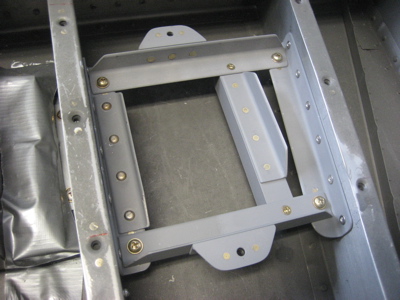
The hold-down bar is another piece of 1/16" angle, with one of the legs cut down to about 1/8" wide to clear the baggage floor above. The bolts are AN3-12A's.
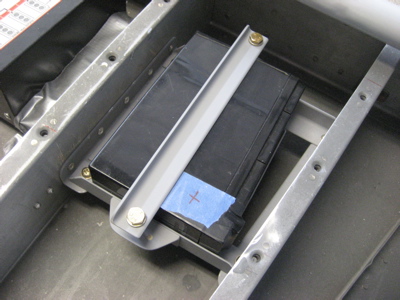
Here's a perspective view showing exactly where in the airplane the aux battery is located. It's getting quite cozy in there under the baggage floor.
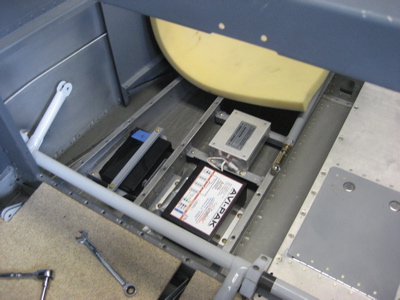
If you look at the datasheet linked above, you can see that the battery's terminals are on the side, which made the design of the tray a little more complicated than it should have been. The right-hand wall of the tray has a notch cut out to provide plenty of clearance around the positive battery terminal. The negative terminal has enough room around it to get the FastOn connector over it, and beyond that I don't really care if the ground wire touches the airframe or not.